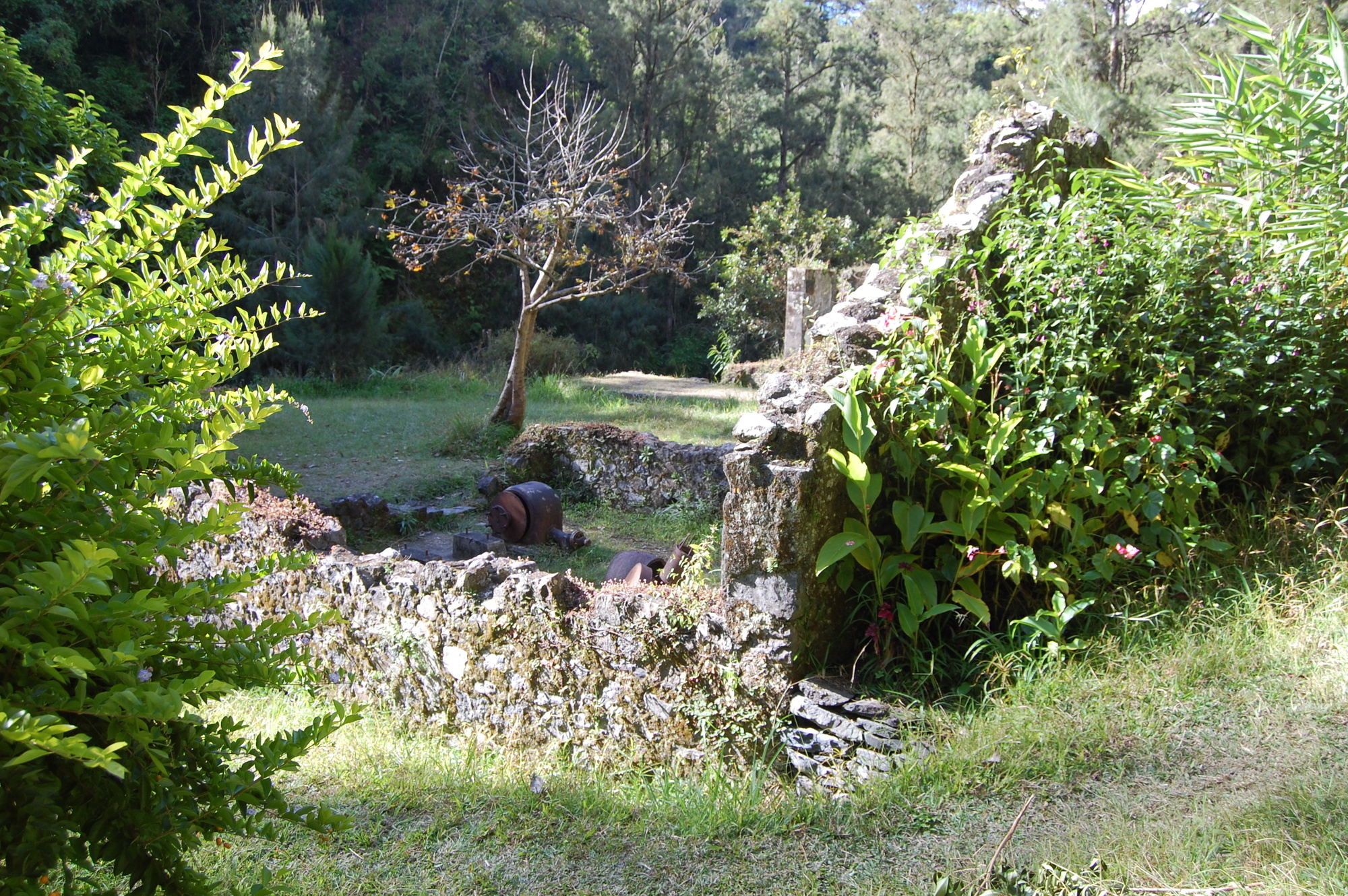
- Home
- Archaeology on Reunion Island
- Sites
- Salazie
- Thermes de Hell-Bourg
The ruins of the former Hell-Bourg thermal baths can still be seen today below the village that grew up around them from the 1850s.
Two kid hunters discovered the Salazie hot springs on the right bank of the Bras-Sec gully in 1831; as a result of this discovery, the area, which has been described as a paradise, was called "soaloz", "the good camp". One thousand litres of water an hour poured out of the spring at an average temperature of 32°C, which soon attracted the wealthy inhabitants of Bourbon island, despite the lack of facilities on the site. The waters were similar to Vichy and they were attributed multiple therapeutic properties. The hot spring village on Bé Mahot plateau became Hell-Bourg in 1842.
A thermal establishment was opened in 1852 and taps were installed to supply the village and baths. The discharge point was under a large building with a meeting room, billiards room and a special lounge for ladies. A second building was equipped with baths.
The middle class occupants of the Salazie cirque made changes to the area around the hot springs, improving access to the village and building refined second homes, hotels for foreign visitors and facilities such as churches and schools. The Petits-Blancs earned a living by selling their produce and providing services to tourists, such as carrying sedan chairs for people taking the waters and washing laundry.
As tourism dwindled during the interwar period and the source dried up following a series of natural disasters, the hot springs were gradually abandoned, and as early as the 1990s they are described as being covered by vegetation and in a state of ruin.





